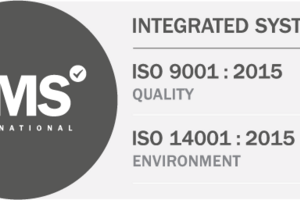20 April 2016
Why low energy lighting solutions bring the 'millenials' flocking to your business
'Millenials,' those of us born from the eighties to the noughties, are especially passionate about the sustainability record of their employers. Today's firms must improve and communicate green credentials to attract the very best talent and deliver profit
Often, the logic behind installing commercial LED lighting majors on fast ROI, better light quality or a more efficient, profitable estate.
But intriguingly, another key benefit exists. Younger employees are emotionally invested in the environment. They are voting with their feet on where they will work and for whom, based on how sustainable any potential employer is.
Along with elements like flexible home working, sustainable workplaces means a lot to young employees. Therefore, every business must consider whether it is acting fast enough, demonstrating leadership on carbon reduction which also attracts bright young minds.
Today's recruitment priority; the commitment to carbon reduction
Many millenials will question the sustainability metrics of employers at interview. Some will even dismiss employment offers out of hand if the company can't prove its green pedigree.
Firms like M&S and Sainsburys have seen the direction of travel. Lux reported that from 2014, all new lighting in Sainsburys stores, offices and warehouses would be specified as LED by default. The retailer is seeking 30% carbon emission reductions by 2020.
M&S too is rolling out LEDs. Both firms seek quick ROI and bottom line wins, but the M&S Plan A, which details its overall green drive, lays out why sustainability is so crucial to the workforce too.
'We soon realised that there was a compelling business case for sustainability,' M&S explains. 'It saved us money, inspired our employees, opened up new revenue streams, drove innovation in anticipation of disruption in our sector.' At Greenlite, we believe these are precisely the attitudes today's young employees crave.
'Today tens of thousands of M&S employees are engaged in delivering Plan A,' M&S concludes. 'They understand that social and environmental progress can often lead to good commercial outcomes too.'
In this new world, employees expect to be actively involved in sustainability with their employer. If simple steps like efficient lighting aren't on the agenda, many prospective future managers will walk on by.
The influencers of the future
CEOs must understand; sustainability matters to the millennial demographic. As they rise the ranks and gain seniority, they will have greater influence on the steps their workplace takes to embed sustainability.
If there's limited scope to influence within a firm, employees will move on, in a pattern that traces the overall shift towards greener business. Those companies who can't or won't keep up will lose out.
Firms therefore must show leadership with their carbon reduction strategy, and ensure workplaces are energy efficient; lighting is a key part of this. And in addition to employment issues, such moves have obvious financial advantages.
"We were saving about 12% in our energy consumption in the first year alone - the payback was around 15 months,” Richard Laxton, Arla Foods told EDIE, describing LED rollout. “Since 2012, we've reached 15% savings on our energy. And the effect on staff in terms of engagement has also been great.”
Laxton's financial savings as a direct result of LED installation have hit £90,000 annually. Combine that money with the incentivisation such moves offer intelligent minds to work for you, plus the CSR and futurist reputation greener estates win, and the incentives should be obvious.



